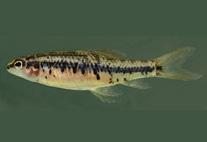Abstract
Syllis monilaris Savigny in Lamarck, 1818, the type species of the genus Syllis Savigny in Lamarck, 1818, is redescribed based on two specimens deposited in the Museum für Naturkunde Berlin (Germany). One specimen is designated as neotype, since the original type material is considered to be lost, and there is a necessity to stabilize the nomenclature of the group. The species is large sized, with long dorsal cirri on anterior segments, becoming short and fusiform from midbody, it has thick compound chaetae with short, unidentate blades, not fused to shafts. The lack of chaetae with fused shafts and blades contradicts the division of the genus Syllis into subgenera as proposed by Langerhans (1879), who considered the subgenus Syllis as having thick fused chaetae on midbody, in addition to compound chaetae, and the subgenus Typosyllis with only compound chaetae. A discussion about the systematics of the genus is included, and according to this new data, Typosyllis is a junior synonymy of Syllis.

